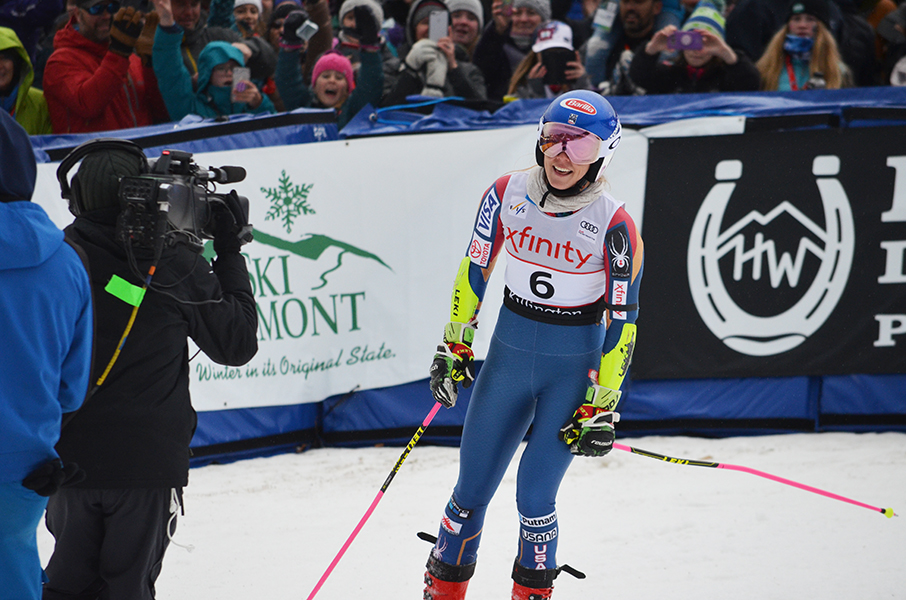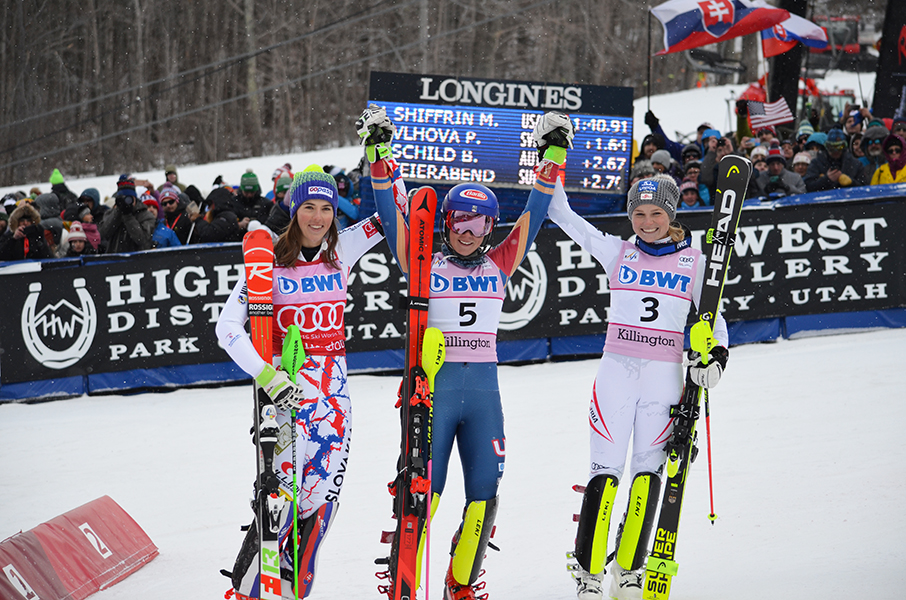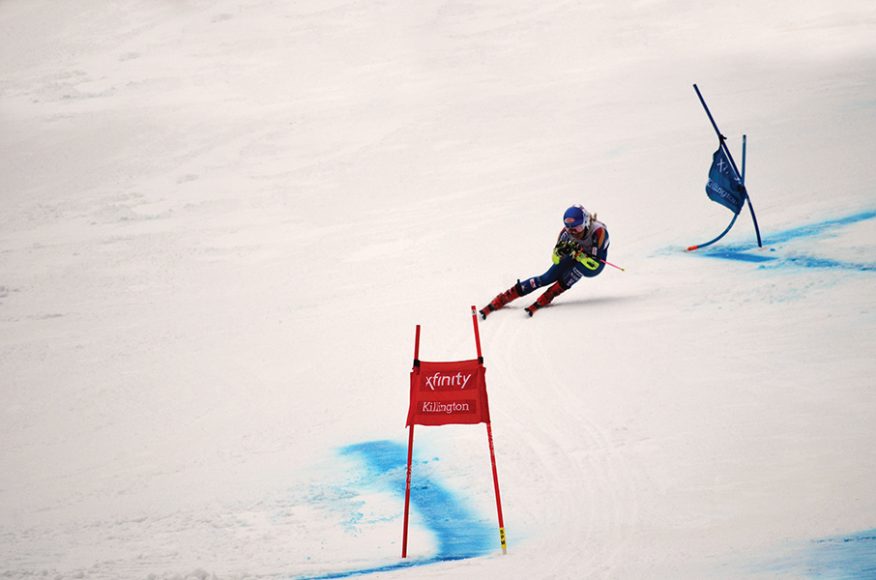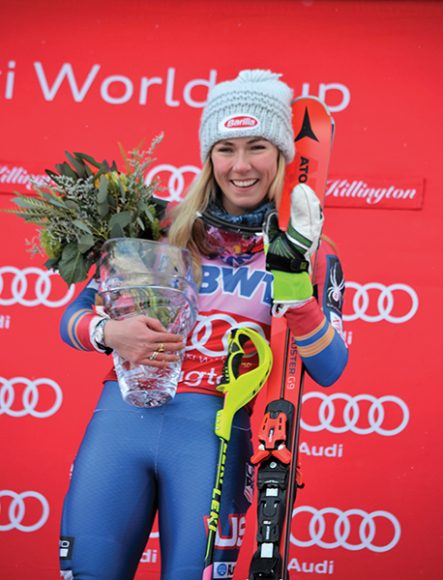Mikaela Shiffrin is fast becoming America’s sweetheart.
At age 22 and at the top of her game, this powerful, smooth, disciplined skier — with a “no-drama” demeanor to match — is on track to become the best to date. She had her World Cup debut just before her 16th birthday and at age 18 became the youngest gold medalist in Olympic skiing history. She has won the World Cup seasonal title in slalom four of the last five years and once won the overall World Cup for most points accrued in all the alpine disciplines. With the Olympics set to begin Feb. 8 in PyeongChang, South Korea, we could very well see the versatile Shiffrin make history. But first a bit of background.
In 1968, Jean-Claude Killy of France took first place in slalom, giant slalom and the downhill, the three alpine skiing events of the day. Today there are two more disciplines, the super giant slalom, or super-G, and the combined event of times for two slalom runs and one downhill run.
Ingemar Stenmark is the winningest World Cup alpine racer in history with 86 World Cup victories. He was a slalom specialist, winning most of his slalom races before finding success in the giant slalom, finishing his career with 40 slalom and 46 giant slalom wins. I remember reading an interview with Killy at the time and he didn’t like it that Stenmark didn’t enter many speed events. He thought if each of the three disciplines had their own specialist winner, it would be to the detriment of the sport. This thinking eventually led to the combined event being reintroduced in 1974 and the super-G debuting in 1982.

Ski racers, at all levels, can typically be divided into two camps, technical or speed. Slalom and giant slalom are considered technical events while the speed events, super-G and downhill, require calculated risk-taking and plain old-fashioned guts as well as speed. Since the 1968 Olympics, no one has flirted with victory in all of the ski disciplines, until now. There is a world of issues and variables that have to fall into place for anyone to have success in the Olympics, especially this year on the Korean peninsula. Athletes must be über-focused, perfectly conditioned physically, mentally confident and healthy. Additionally, the ski race courses set may favor one skiing style — and, thus, one skier — over another. Still, the 2018 Games may well be Shiffrin’s moment.
This past Thanksgiving weekend, Killington, Vermont, hosted the women’s World Cup giant slalom and slalom events, which it did 2016 and will do again this year. The best women skiers on the planet gathered to battle it out on the iconic Superstar trail. Shiffrin took second place in giant slalom on Saturday and first place in slalom on Sunday. She is the undisputed gold standard in slalom, winning 20 of the last 25 slalom events and landing on the podium (top three finishers) four times in the five other races. Ski races need gatekeeping officials that essentially witness whether or not the racer skied on the proper side of the gate to prevent being disqualified. At the Killington event, seven of the 12 gatekeepers were past Olympians. Harry Ryan, one of the gatekeepers, was on the American ski team and on the 1968 Olympic alpine squad. He told me, “All of the top 15 to 30 women are such technically great athletes. But Mikaela is technically perfect. The interaction between her, her skis and the snow is picture-perfect.”
Also trailside as a gatekeeper was Rick Chaffee of the 1968 and ’72 U.S. Olympic teams that competed in Grenoble, France, and Sapporo, Japan, respectively. Chaffee said, “I haven’t been to a World Cup event since I was in one. But Mikaela reminded me of Ingemar Stenmark with such a perfect economy of motion. At Killington, the course was sheer ice by design. It was very windy and Mikaela showed extraordinary carving ability under difficult conditions.”
Mikaela went on to win the slalom by 1.64 seconds, an event often decided by one hundredth of a second. Charles Hughes, the chief of race, was the official responsible for everything on the hill, from fencing to water to the paint lines to improve visibility for the skiers. He told me, “Mikaela is, of course, very focused. She travels and trains with seven or eight support people, including coaches, trainers, technicians and her mother, who plays a critical role in not just providing support and quiet time but also in discussing esoteric technical details of the sport.”

Billy Kidd was another ex-Olympian attending the Killington event. He competed in the ’64 and the ’68 Olympics and is now director of skiing in Steamboat, Colorado. In 1964, he and teammate Jimmy Heuga were the first American men to medal in skiing at the Olympics, taking the silver and bronze in slalom respectively. I asked Kidd about Shiffrin: “The key to Mikaela’s success is that she went to school in Vermont. In Vermont, you can’t muscle your way to success. On the typical icy course of Vermont, you must build technique. And her technique is better than anyone else in the world. She, like Ted Ligety, rarely falls, hands are always up and in position. There is minimal movement and efficiency, which means she is always ready for the finish-line interview. She starts her turns earlier and makes a rounder turn than anyone else. She reminds me of Jean-Claude Killy. He seldom fell and was at his best when under the most pressure.”
After packing her bags at Killington, Mikaela headed west to Lake Louise, Alberta, Canada, to compete in her fourth World Cup downhill race ever. Oh, and she won. On Dec. 5, she took fifth place in the super-G. She has now won World Cup races in slalom, head-to-head parallel slalom, giant slalom, combined and downhill. The only event she hasn’t won is the super-G. This puts her in an enviable position for the PyeongChang Games. She will be favored to win the slalom, but now that she has successfully breached the speed event wall, Shiffrin could win any or all of her events.
Of course, it’s a long shot for everything to come together for the short window that is the Winter Olympics. But her dominance in the technical events combined with her confidence and the flawless technique she brings to the speed events could propel her to the unthinkable. Potentially, she could sweep her events. Still, even being a contender in technical and speed events will likely change the sport. Fingers crossed for the perfect storm that is Shiffrin.
For more on the Winter Olympics, visit pyeongchang2018.com.
MIKAELA SHRIFFRIN AT A GLANCE
Hometown: Eagle-Vail, Colorado, where a park is named for her, Mikaela’s Park.
Born: March 13, 1995, in Vail, Colorado, to Eileen and Jeff Shiffrin, former ski racers. (Dad’s an anesthesiologist.)
Education: Burke Mountain Academy in East Burke, Vermont.
Dedication to skiing: Knows no bounds. She even trains on Christmas Day.
Family love: In June, Shiffrin gave a shout-out to big brother Taylor, also a skier, as he was awarded his MBA. “You continue to lead the way and inspire me in so many ways,” she posted on Instagram, beneath a sweet picture of them as children.
Hobbies: Biking, writing music, playing the piano, doing word puzzles, binge-watching TV with Mom, napping and feeding her “fat Tabby cat,” Muffin.
Hot boyfriend: French giant slalom skier Mathieu Faivre. “He’s a cutie,” she told The New Yorker.
Her motto: Her helmet and skis are emblazoned with “ASFTTB” — “Always ski faster than the boys.”
Source: E! News, Cosmopolitan magazine






